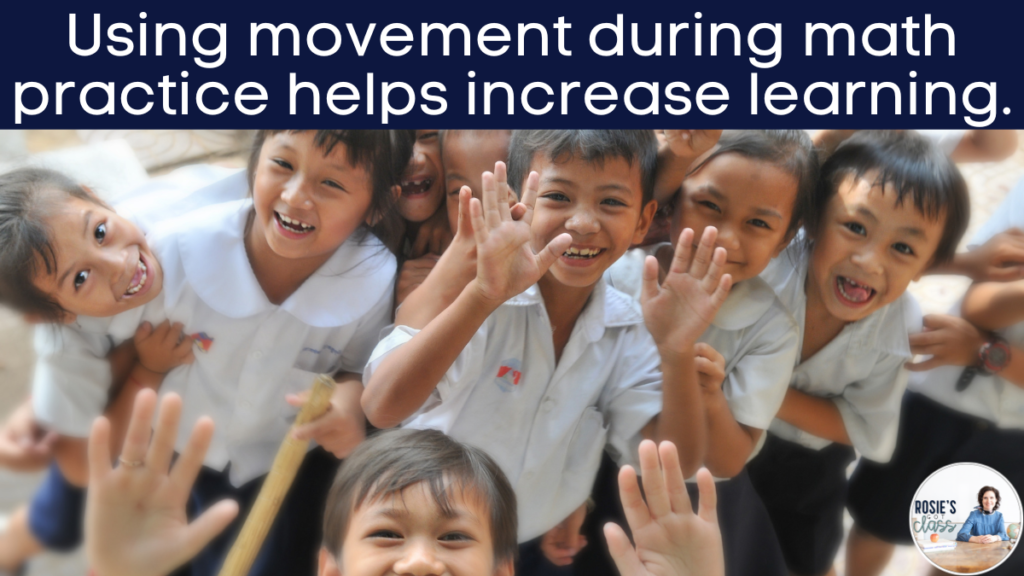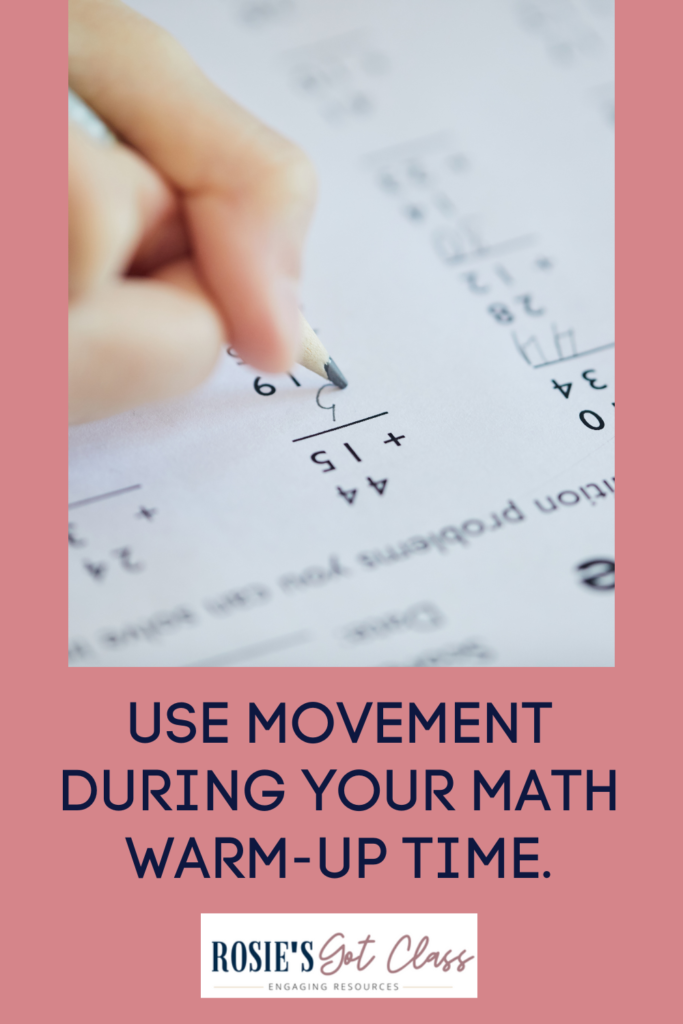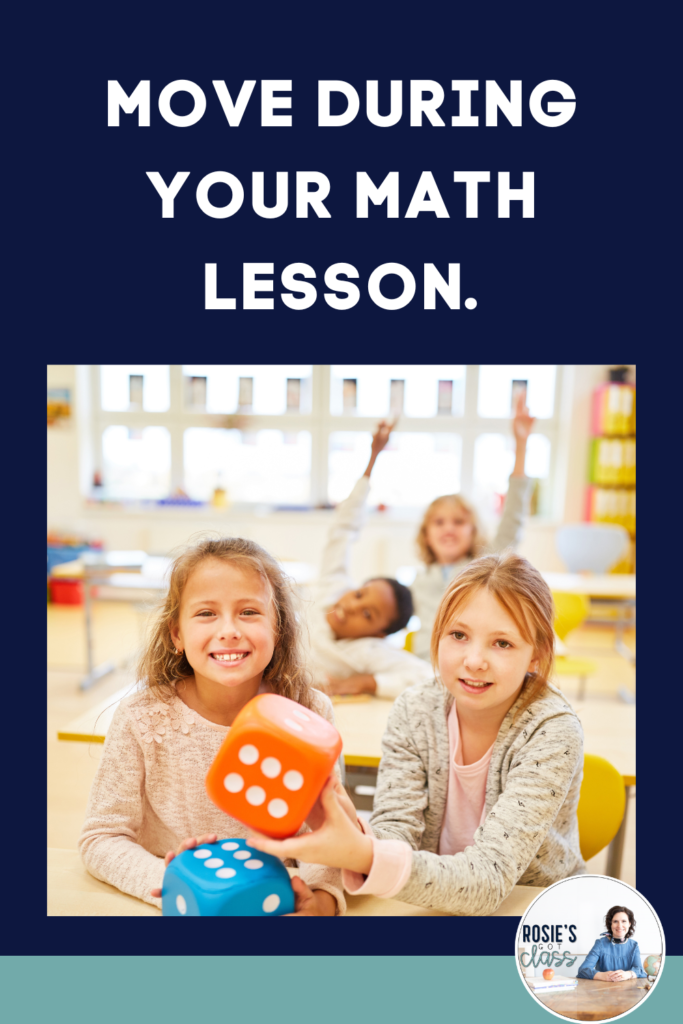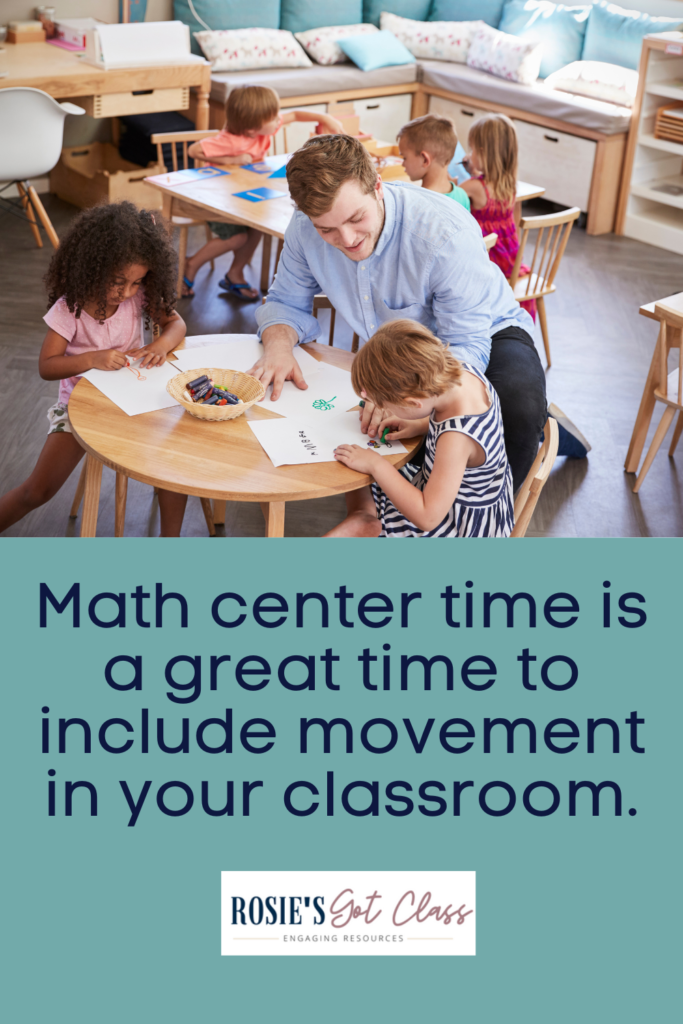
Is it possible to find a way to use movement to practice math because your students need to get out of their desks? Have you considered including movement during math? I know you think of using it during P.E. or recess, but did you know that using movement can help your students remember and understand better? By incorporating movement into math, you can use the boundless energy of your students and increase their learning. It helps your students and you! Sitting for long periods of time is hard for most everyone, and using movement can help your students focus and increase their engagement.
Math Around the Room is one way I help my students move. It is easy to prep and turns math problems into fun. No more boring worksheets! Give your students a recording sheet, and they will be on their way to moving around the room to answer math problems. You will want this FREE sample of Math Around the Room. Three different versions are included so you can differentiate to help your students practice one-digit, two-digit, or three-digit subtraction problems. Easily print the cards and recording sheet, put them around the room, and you will be prepared and ready to go. Your students will be eager to move from problem to problem! Type your name and email in the boxes, and I will send it to you right away!
Do you have a class of wiggly bodies? Do you need to move while you are teaching? Movement can help all of us. There are times that we need to sit and listen, but research suggests that incorporating movement into the learning process can significantly improve memory retention and overall understanding. With this in mind, it seems like a good idea to try to increase movement within our school days. Practicing math and including movement is a great place to begin.

Before I share three ideas that I have tried in my classroom, let’s think about why movement helps learning. Movement has been linked to increased cognitive function, improved attention spans, and enhanced memory. Physical activity triggers the release of neurotransmitters like dopamine and norepinephrine which help maintain focus while creating a positive learning environment. Integrating movement into math practice taps into these cognitive benefits and makes the learning process more effective and enjoyable. Since students are growing up in a world where everything is instant and quick, it is becoming more and more difficult to keep them focused. By using movement, we can help maintain student focus.
Here are three ideas to help you get moving that I have tried in my classroom.

1. Practice Math During Math Warm-up Time
Use movement during a math warm-up time before a lesson to get them thinking about math.
It helps your students get ready to think like mathematicians. Physical activity makes learning fun while it opens up their brains to learning.
Here are some simple activities I have used in my classroom that you may want to try.
- Jumping Jacks Facts – I give them a math fact without the answer and then we all do a jumping jack together as we repeat the fact and then answer it. They love the movement as they repeat the fact, and it also gives them time to use the strategies we have practiced to include the answer. It sounds like this.
Teacher: 5+3=
Students and teacher: As they begin the jumping jack, they repeat the fact and answer it. We do the jumping jack together, and we can usually do two jumping jacks within the time we say the equation and answer it.
- Punch It – I give them a math fact without the answer. We all repeat the fact by punching across the midline of our bodies. This is important because it helps children to use both sides of their brains to make a smooth and controlled movement. By crossing the midline, children are able to use both sides of the body together.
This is how it sounds.
Teacher: 9+8=
Students and teacher: As everyone says “Nine,” they punch one hand and arm across the middle of their body. Then they say “Plus,” as they are pulling back the first arm they punched. Next they say “Eight,” as they use the other hand and arm across the middle of their body. As we repeat “Equals,” we take both of our arms in front of our bodies and make our arms parallel to form an equal sign. Then we say the answer. By repeating the equation and using our bodies to move, it engages our brains and gives us time to answer the question. Also, as we use more senses by moving and speaking the equations, it increases our retention.

2. Practice Math During Math Lesson Time
Use movement during a math lesson.
After you have explained a concept and you have practiced the concept together, then have your students try a problem on their own using their whiteboards. I have them turn their whiteboards over, so I know when most of them are finished. Then I give them an answer to the equation. If they think the answer is true, then they stand up. If they think the equation is false, they stay sitting. Then we discuss the problem. If the answer is false, we decide how we can make the equation true. This little bit of movement keeps my class more focused and makes the lesson much more engaging.

3. Practice Math During Math Center Time
Use movement during your math center time.
This is a simple way to get your students moving, and it is so much more fun than a boring worksheet! I place task cards with math problems on them strategically around the room. My students get their clipboards, pencil, and recording sheet and begin moving around the room. They know that there are only one or two students at a time (depending on your class) allowed to answer the questions on the card. This approach incorporates movement and learning and adds variety to your math center time.
Are you ready to get moving during your math block? These simple ideas can help you and your class with increased attention spans and retention of concepts. Your class will love these activities and be enthusiastic about moving around during math instead of sitting at a desk completing a boring worksheet. These movement activities reinforce math concepts and help develop a positive attitude towards learning. You will love having these enthusiastic learners in your classroom. So let’s keep moving and make math a fun adventure!
Here are some other articles that might be helpful.
8 Ways to Infuse Movement into Math


